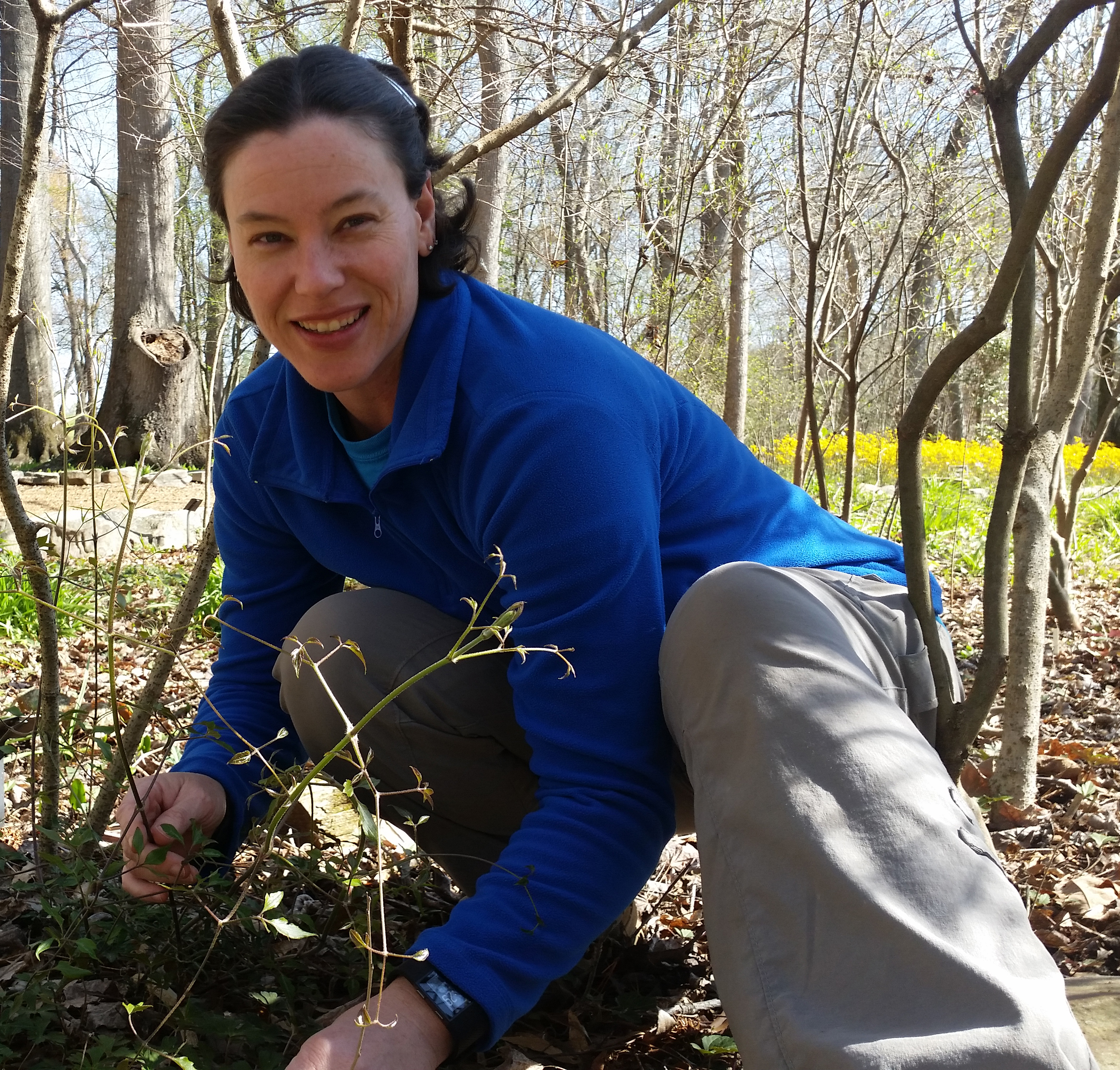The high temperatures and humidity in July make for harsh conditions for many plants, along with insect and disease pressure, but there are many plants that are excellent performers that bloom and thrive during the summer swelter.
Butterfly bush
Buddleia species are excellent performers this time of year, putting on an extravagant number of blooms that pollinators love. These shrubs bloom on new wood and come in a variety of mature sizes, from 3 to 12 feet, and bloom colors range from white, yellow, pink, purple, and red.
Here are a couple of standout Buddleia in our collection:

Buddleia x Lo & Behold® ‘Purple Haze’ (Located at the Spillway and several other locations)
This heat and drought tolerant dwarf butterfly bush has fragrant purple-blue flowers from mid-summer to frost. Sterile flowers mean it will not spread by seed and its ability to rebloom without deadheading makes it an excellent low maintenance shrub. It attracts butterflies and hummingbirds but not deer.
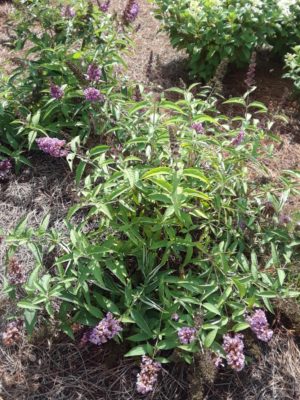
Buddleia x Flutterby Petite™ Tutti Fruitti ‘Podaras13’ (Located next to the Conservatory)
Part of the Flutterby Petite™ Series from Monrovia, this butterfly bush is drought and heat-tolerant along with continuous pink blooms from June until frost, attracting hummingbirds and butterflies.
Roses
Roses are one of the oldest ornamental plants in cultivation, but they often get a finicky reputation because of the many pests and diseases that attack them. While no rose is immune to everything, there are many new varieties of landscape roses that feature excellent disease resistance to the most common problems. Two standouts from the Drift® series that are new to our collection include:

Rosa x Coral Drift® ‘Meidriflora’ (Located by the Conservatory doors)
This low-maintenance, cold hardy groundcover rose has glossy dark green foliage and excellent disease resistance. It’s low spreading habit and vigorous coral-colored flowers from spring to frost make it a great choice in locations that need low vegetation and lots of color. All roses require full sun and well drained soil.
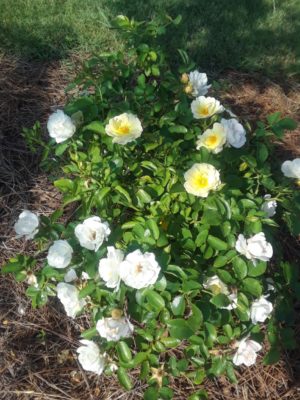
Rosa x Popcorn Drift® ‘Novarospop’ (Located on the Spillway at the north end of Lake Lonnie)
This low-growing rose has glossy dark green foliage with good disease resistance on a vigorous, hardy, carefree shrub and abundant soft yellow re-blooming flowers that fade to cream white without deadheading. It performs well in the heat as long as it gets weekly watering and full sun.
Many, many others…
There are more plants blooming this month than can be listed, so you’ll have to come out and see for yourself the amazing variety of flowers showcased in our plant collections!
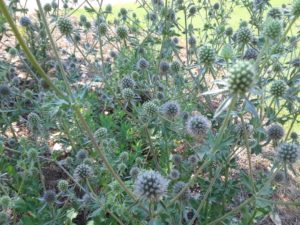
Eryngium planum, Flat Sea Holly (Located in the Annual Garden)
Flat Sea Holly is native to Europe and grows anywhere from 18 to 36 inches tall in full sun. It is drought and wind tolerant, grows well in a variety of soils, and is valued for its long bloom time and as a spectacular and long-lasting cut flower.

Veronicastrum virginicum, Culver’s root (Located at the Damson Aquatic Circle)
Veronicastrum virginicum, Culver’s root, is a tall native perennial which occurs in open woods, thickets and moist meadows. It grows best in average, medium to wet, well-drained soil in full sun to part shade. Slender 9″ long white to pale blue flowers open on spikes in early summer atop strong, upright stems. Bloom can extend well into late summer if they are dead-headed.
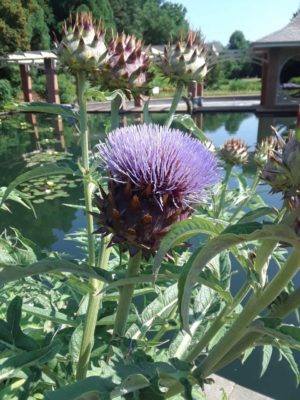
Cynara cardunculus, Cardoon (Located at the Damson Aquatic Circle)
Cardoon, also called artichoke thistle, is a large spiny perennial native to the Mediterranean that is prized for its silvery-green serrated foliage and purple flowers which attract pollinators. It has been cultivated in southern Europe as a vegetable because the flower buds may be eaten like an artichoke.
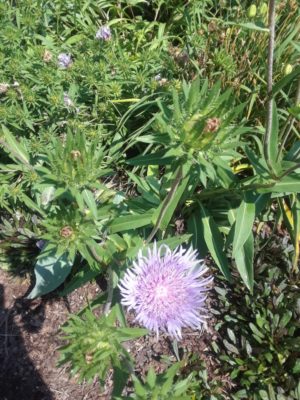
Stokesia laevis, Stoke’s Aster (Located at the Eco Border in the Four Seasons Garden and the Cottage Garden)
Stoke’s Aster is a showy native perennial that is an attractive and low-maintenance wildflower that works perfectly in a butterfly or cut flower garden. The nectar attracts many different pollinators like butterflies and bees. While the most common flower color is blue-lilac, cultivars are available in deep blue, purple, rosy-pink, silvery-white, and yellow. Flowers can grow to be as large as four inches across and bloom from spring to summer.
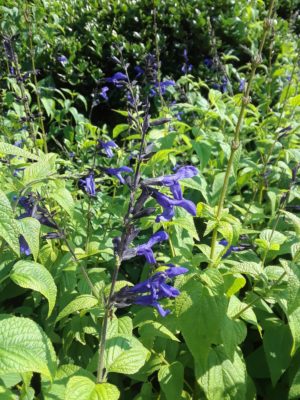
Salvia guaranitica, ‘Black & Blue’ Salvia (Located in the Annual Garden)
Salvia ‘Black & Blue’ is native to Brazil, Paraguay and northern Argentina. It is a tender perennial with fragrant foliage and is heat and drought tolerant. It attracts birds, butterflies, hummingbirds and resists deer browse. Typically growing 3’ tall, ‘Black and Blue’ is a cultivar that features deep cobalt blue flowers with black calyces. Flowers appear on spikes to 15” long over a long mid-summer to fall bloom.

